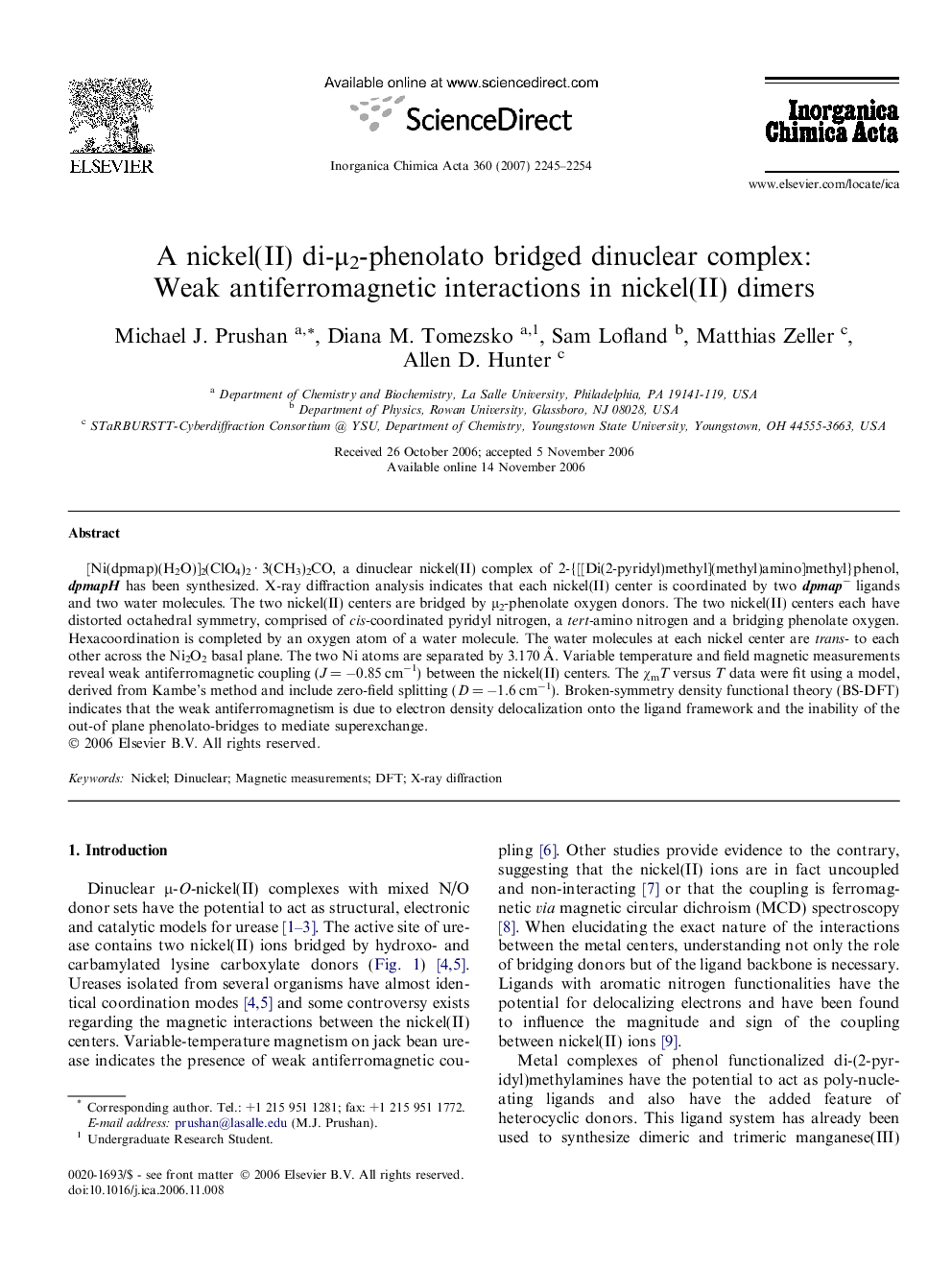| Article ID | Journal | Published Year | Pages | File Type |
|---|---|---|---|---|
| 1309757 | Inorganica Chimica Acta | 2007 | 10 Pages |
[Ni(dpmap)(H2O)]2(ClO4)2 · 3(CH3)2CO, a dinuclear nickel(II) complex of 2-{[[Di(2-pyridyl)methyl](methyl)amino]methyl}phenol, dpmapH has been synthesized. X-ray diffraction analysis indicates that each nickel(II) center is coordinated by two dpmap− ligands and two water molecules. The two nickel(II) centers are bridged by μ2-phenolate oxygen donors. The two nickel(II) centers each have distorted octahedral symmetry, comprised of cis-coordinated pyridyl nitrogen, a tert-amino nitrogen and a bridging phenolate oxygen. Hexacoordination is completed by an oxygen atom of a water molecule. The water molecules at each nickel center are trans- to each other across the Ni2O2 basal plane. The two Ni atoms are separated by 3.170 Å. Variable temperature and field magnetic measurements reveal weak antiferromagnetic coupling (J = −0.85 cm−1) between the nickel(II) centers. The χmT versus T data were fit using a model, derived from Kambe’s method and include zero-field splitting (D = −1.6 cm−1). Broken-symmetry density functional theory (BS-DFT) indicates that the weak antiferromagnetism is due to electron density delocalization onto the ligand framework and the inability of the out-of plane phenolato-bridges to mediate superexchange.
Graphical abstract[Ni(dpmap)(H2O)]2(ClO4)2 · 3(CH3)2CO, a dinuclear nickel(II) complex of 2-{[[Di(2-pyridyl)methyl](methyl)amino]methyl}phenol, dpmapH has been synthesized. X-ray diffraction analysis indicates that each nickel(II) center is coordinated by two dpmap− ligands and two water molecules. The two nickel(II) centers are bridged by μ2-phenolate oxygen donors. Each nickel(II) center has a distorted octahedral symmetry, and are separated by 3.170 Å. Variable temperature and field magnetic measurements reveal the presence of weak antiferromagnetism (J = −0.85 cm−1) and ZFS (D = −1.6 cm−1) between the nickel(II) centers. Broken-symmetry density functional theory (BS-DFT) calculations indicate the weak magnetic interactions are a result of the lack of overlap between the metal orbitals and those on the phenolate bridges.Figure optionsDownload full-size imageDownload as PowerPoint slide
